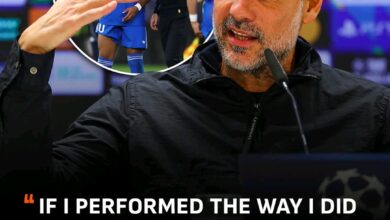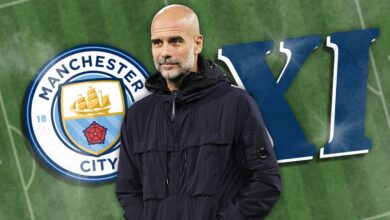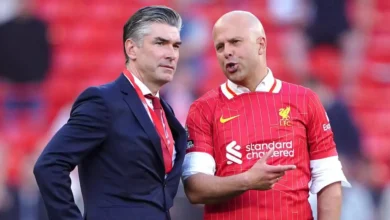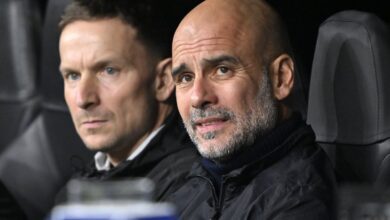Fabrizio Romano says £50m Man City target wants to join PSG instead, ‘verbal agreement’ has been reached
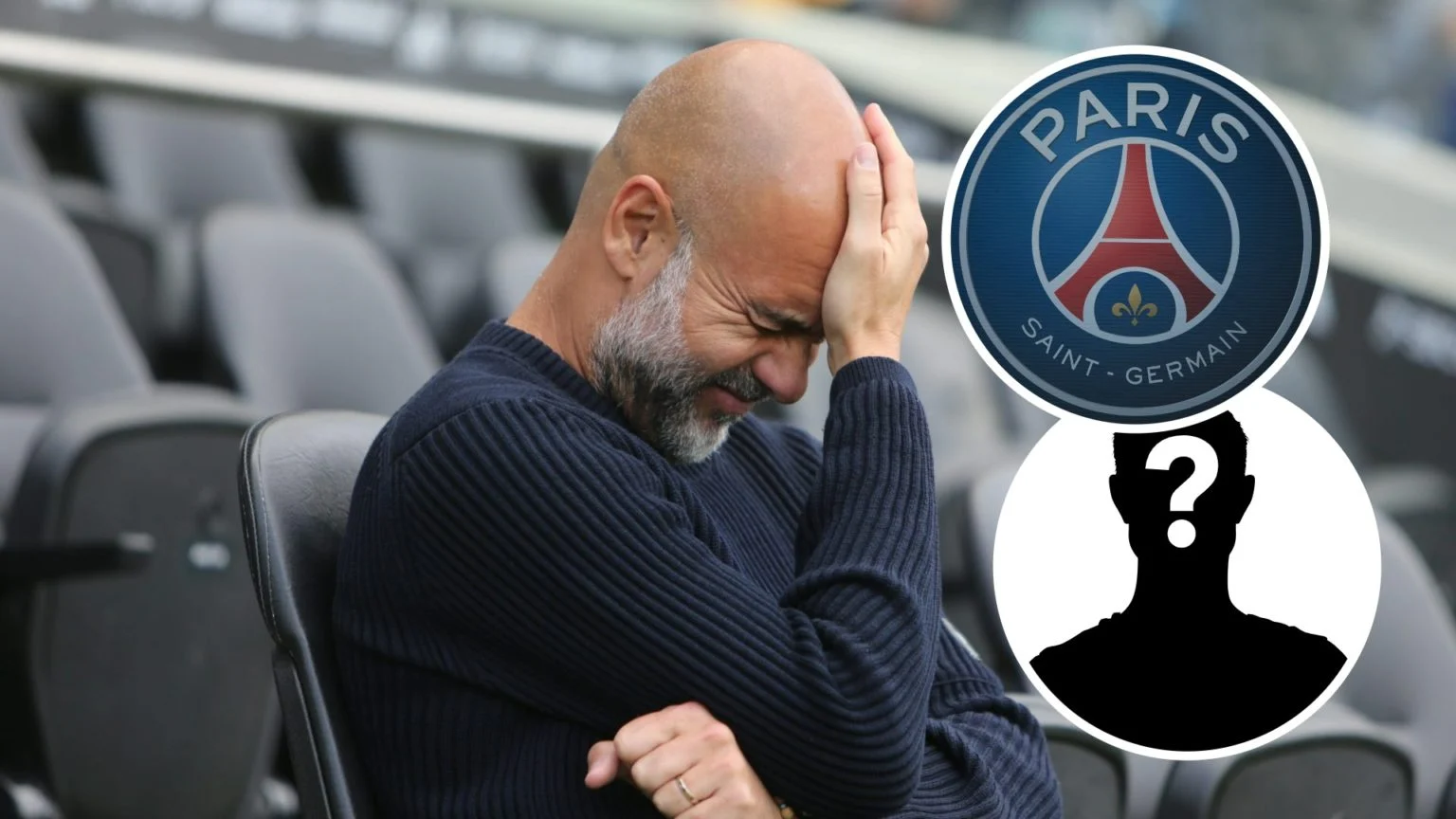
Manchester City’s approach to defensive reinforcement continues to evolve as Pep Guardiola navigates the complexities of squad building in modern football. The club’s recent activities in the transfer market reflect a calculated strategy aimed at addressing specific positional weaknesses while maintaining the tactical flexibility that has become synonymous with Guardiola’s methodology. The acquisition of Rayan Ait-Nouri from Wolverhampton Wanderers last month represents a significant step forward in this ongoing process, demonstrating the club’s commitment to strengthening their defensive foundations ahead of what promises to be another demanding campaign.
Ait-Nouri’s arrival from Wolves addresses a crucial need for pace and attacking thrust from the left-back position. The Algerian international has established himself as one of the Premier League’s most promising full-backs during his time at Molineux, combining defensive solidity with an impressive ability to contribute in the final third. His crossing ability, pace in transition, and comfort operating in advanced positions make him an ideal fit for Guardiola’s tactical system, where full-backs are expected to function as additional midfielders during possession phases while providing width and creativity in attacking situations.
The signing represents more than just a positional upgrade; it demonstrates City’s ability to identify and secure talented players from within the Premier League who understand the physical and tactical demands of English football. Ait-Nouri’s experience in the league, coupled with his age profile and room for development, aligns perfectly with the club’s strategic approach to recruitment, which balances immediate impact with long-term potential.
However, despite the positive addition of Ait-Nouri, Manchester City’s defensive requirements remain incomplete. The FIFA Club World Cup provided a stark reminder of the areas where the squad still requires reinforcement, particularly highlighting concerns about the right-back position that have persisted throughout recent seasons. These defensive vulnerabilities, exposed against elite international opposition, have reinforced Guardiola’s determination to address these issues before the current transfer window closes.
The Right-Back Conundrum: An Ongoing Priority
The FIFA Club World Cup served as both a showcase and a diagnostic tool for Manchester City’s current squad composition. While the tournament demonstrated the club’s ability to compete at the highest level against international opposition, it also exposed specific areas of concern that require immediate attention. The right-back position, in particular, emerged as a significant area of weakness that could potentially undermine the team’s defensive stability in crucial matches throughout the upcoming season.
Fabrizio Romano’s recent reporting suggests that Manchester City’s hierarchy has identified this positional weakness as a priority for the remaining weeks of the transfer window. The club’s intention to secure a right-sided defender before the window closes indicates the urgency with which they view this requirement. This focus represents a shift from their earlier interest in central defensive reinforcements to addressing what has become a more pressing tactical need.
The right-back position in Guardiola’s system demands a unique combination of attributes that extends far beyond traditional defensive responsibilities. Players operating in this role must possess exceptional technical ability to contribute effectively to build-up play, while also providing width and attacking threat in the final third. Additionally, they must demonstrate tactical intelligence to understand when to advance and when to maintain defensive stability, particularly during transitions between attacking and defensive phases.
The physical demands of the Premier League add another layer of complexity to this positional requirement. Right-backs must possess the stamina to consistently contribute at both ends of the pitch over the course of a 90-minute match, while also maintaining the pace necessary to track back and defend against counter-attacking situations. The technical precision required for crosses, passes, and defensive interventions must be maintained even under the intense physical pressure that characterizes English football.
Manchester City’s current options in this position have proven insufficient to meet these demanding requirements consistently. While the club possesses versatile players who can operate as makeshift right-backs, the lack of a specialist in this role has created tactical limitations that become particularly apparent against elite opposition. The FIFA Club World Cup highlighted these weaknesses, providing opponents with opportunities to exploit this area of relative weakness in City’s otherwise formidable defensive structure.
Illya Zabarnyi: The Target That Got Away
The emergence of Illya Zabarnyi as a potential target for Paris Saint-Germain represents a fascinating subplot in Manchester City’s ongoing pursuit of defensive reinforcements. The Ukrainian center-back has established himself as one of the Premier League’s most promising young defenders since his arrival at Bournemouth from Dynamo Kyiv in 2023. His impressive performances in England’s top flight have not gone unnoticed by Europe’s elite clubs, with Manchester City maintaining a long-standing interest in his development and potential availability.
Zabarnyi’s journey from Ukrainian football to Premier League prominence exemplifies the type of career trajectory that typically attracts Manchester City’s recruitment team. His technical ability, combined with his physical attributes and tactical awareness, represents the profile of player that Guardiola values in central defensive positions. The Ukrainian’s comfort in possession, passing range, and ability to read the game align perfectly with the requirements of City’s defensive system, where center-backs must function as additional playmakers during build-up phases.
The defender’s Premier League experience provides additional value in the current market context. His adaptation to English football has been seamless, demonstrating the resilience and tactical flexibility necessary to succeed in the league’s demanding environment. This proven ability to perform consistently at the highest level of English football reduces the risk typically associated with international transfers, making him an attractive proposition for clubs seeking immediate impact rather than long-term development projects.
Bournemouth’s valuation of £50 million for Zabarnyi reflects both his current ability and future potential. The fee represents a significant investment for a player who, while impressive, has yet to establish himself at the very highest level of European competition. This valuation has created a complex decision-making scenario for Manchester City, who must weigh the immediate benefit of securing a talented young defender against the financial implications and opportunity costs associated with such a substantial investment.
The club’s reported interest, dating back to May, suggests that Zabarnyi features prominently in their long-term planning considerations. However, their reluctance to submit an official bid indicates either uncertainty about the valuation or a strategic decision to prioritize other positional needs. This hesitation has created an opportunity for other elite clubs to enter negotiations, with Paris Saint-Germain now emerging as a potential destination for the Ukrainian international.
PSG’s Strategic Intervention
Paris Saint-Germain’s reported interest in Zabarnyi represents a significant development that could impact Manchester City’s long-term defensive planning. The French champions’ ability to compete financially with any club in world football, combined with their immediate need for defensive reinforcements, positions them as formidable competitors in any potential bidding scenario. Their involvement transforms what was previously a straightforward negotiation between City and Bournemouth into a more complex multi-party situation.
PSG’s defensive requirements stem from their ongoing rebuilding process following several high-profile departures in recent transfer windows. The club’s transition from a star-studded approach to a more balanced, team-oriented strategy has created opportunities for younger players to establish themselves as key figures in the squad. Zabarnyi’s profile as a promising young defender with Premier League experience fits perfectly with this new direction, offering both immediate capability and long-term potential.
The French club’s financial resources enable them to meet Bournemouth’s valuation without the careful consideration that might influence other potential suitors. Their ability to offer competitive wages and the prospect of regular Champions League football represents a compelling proposition for any ambitious young defender seeking to establish himself at the highest level of European competition.
Furthermore, PSG’s current squad composition might offer Zabarnyi more immediate opportunities for regular first-team football compared to Manchester City, where competition for places remains intense across all positions. This factor could prove decisive in any potential negotiations, as young players increasingly prioritize playing time and development opportunities when making career decisions.
Market Dynamics and Strategic Implications
The Zabarnyi situation illustrates the broader challenges facing Manchester City in the current transfer market. The club’s success and reputation for developing young talent has created a scenario where they must compete not only on financial terms but also on the promise of playing time and career development opportunities. Their extensive squad depth, while beneficial for maintaining competitiveness across multiple competitions, can sometimes discourage potential targets who fear limited opportunities for regular involvement.
The £50 million valuation placed on Zabarnyi by Bournemouth reflects the current inflation in transfer fees, particularly for young players with Premier League experience. This pricing structure requires clubs to make increasingly difficult decisions about resource allocation, balancing the immediate need for squad reinforcement against long-term financial sustainability and opportunity costs associated with major investments.
Manchester City’s apparent hesitation to meet this valuation suggests a strategic approach that considers multiple factors beyond immediate tactical needs. The club’s recruitment philosophy emphasizes value creation and long-term planning, requiring careful evaluation of whether individual acquisitions represent optimal use of available resources. This methodical approach, while sometimes resulting in missed opportunities, has generally served the club well in building a sustainable model for success.
The emergence of PSG as a competitor for Zabarnyi’s signature highlights the global nature of modern football recruitment, where elite clubs must constantly monitor and respond to the actions of their rivals. The interconnected nature of the transfer market means that decisions made by one club can have cascading effects on the plans and strategies of others, requiring constant adaptation and flexibility in recruitment planning.
Tactical Considerations and Alternative Strategies
While the potential loss of Zabarnyi to PSG represents a setback for Manchester City’s long-term defensive planning, it also provides an opportunity to reassess their tactical priorities and explore alternative approaches to squad strengthening. The club’s immediate focus on securing a right-back suggests a pragmatic recognition that addressing urgent positional needs may take precedence over long-term planning considerations.
The right-back market presents its own unique challenges and opportunities. Unlike the center-back position, where numerous talented options exist across Europe’s major leagues, the right-back position features fewer elite-level players capable of meeting Guardiola’s specific tactical requirements. This scarcity creates both challenges in terms of availability and opportunities in terms of value identification, as clubs who can identify and develop right-backs often find themselves in advantageous negotiating positions.
Manchester City’s recruitment team must balance several competing factors when evaluating potential right-back targets. Technical ability remains paramount, as any player operating in this position must demonstrate exceptional comfort in possession and the ability to contribute effectively to build-up play. Physical attributes, including pace, stamina, and defensive awareness, are equally important given the demanding nature of the role in Guardiola’s tactical system.
Experience factors also play a crucial role in the evaluation process. Players with Premier League experience offer reduced adaptation risks but often command premium valuations. International players may offer better value but require more careful assessment of their ability to adapt to English football’s unique demands. Young players represent potential long-term solutions but may lack the immediate readiness required for Manchester City’s immediate competitive needs.
The club’s approach to addressing these competing requirements will likely involve a combination of immediate problem-solving and long-term strategic planning. The urgent need for right-back reinforcement may necessitate a more pragmatic approach in the short term, potentially involving loan deals or temporary solutions that address immediate tactical needs while allowing more time for comprehensive evaluation of permanent options.
Financial Fair Play and Resource Management
The broader context of Financial Fair Play regulations adds another layer of complexity to Manchester City’s transfer planning. The club must carefully balance their desire for squad improvement against regulatory requirements and long-term financial sustainability. This constraint requires strategic thinking about resource allocation, timing of major investments, and the overall structure of transfer activities.
The £50 million valuation for Zabarnyi must be evaluated not just in terms of the player’s current ability and potential, but also in the context of how this investment fits within the club’s overall transfer budget and strategic priorities. The opportunity cost of such a significant investment in a center-back, when the right-back position represents a more urgent need, complicates the decision-making process and may have influenced the club’s reluctance to pursue the Ukrainian more aggressively.
Manchester City’s approach to Financial Fair Play compliance has historically involved careful timing of major investments and strategic player sales to maintain regulatory compliance while continuing to strengthen the squad. This balancing act requires sophisticated planning and may sometimes result in prioritizing certain positions or player profiles over others based on regulatory rather than purely tactical considerations.
The club’s revenue streams from commercial partnerships, prize money, and player sales provide flexibility in transfer planning, but these resources must be managed carefully to ensure compliance with spending regulations. The timing of major investments, the structure of payment terms, and the potential for future player sales all factor into the complex calculations that determine transfer strategy.
Future Planning and Squad Evolution
Looking beyond the immediate transfer window, Manchester City’s approach to defensive reinforcement reflects broader themes in their squad evolution and long-term planning. The club’s success in recent years has been built on a foundation of tactical flexibility, technical excellence, and strategic recruitment that balances immediate needs with future development.
The right-back situation illustrates the ongoing challenges of maintaining squad quality across all positions while operating within financial constraints and competitive pressures. The position’s specialized requirements in Guardiola’s system make it particularly difficult to fill adequately, requiring players who combine technical excellence with tactical intelligence and physical capability.
The potential loss of Zabarnyi to PSG, while disappointing from a recruitment perspective, may ultimately benefit the club by forcing a more focused approach to addressing immediate tactical needs. The resources that might have been allocated to securing the Ukrainian center-back can now be redirected toward the right-back position, potentially enabling a more comprehensive solution to this pressing concern.
Manchester City’s long-term success will depend on their ability to continue identifying and developing players who fit their tactical requirements while managing the financial and regulatory constraints that shape modern football. The current transfer window represents another chapter in this ongoing process, with the club’s decisions in the coming weeks providing insight into their strategic priorities and approach to squad management.
The interconnected nature of transfer decisions means that the resolution of the right-back situation may have implications for other areas of the squad, potentially creating opportunities for tactical innovation or necessitating adjustments to playing style and formation preferences. Guardiola’s tactical flexibility provides options for adapting to different personnel configurations, but the ideal scenario involves securing players whose attributes perfectly align with the preferred tactical approach.
As the transfer window progresses toward its conclusion, Manchester City’s ability to address their defensive priorities will serve as a measure of their continued commitment to excellence and their capacity to adapt to the evolving challenges of elite football competition. The decisions made in the coming weeks will influence not just the upcoming season but potentially the club’s long-term trajectory and competitive positioning in both domestic and European competitions.






